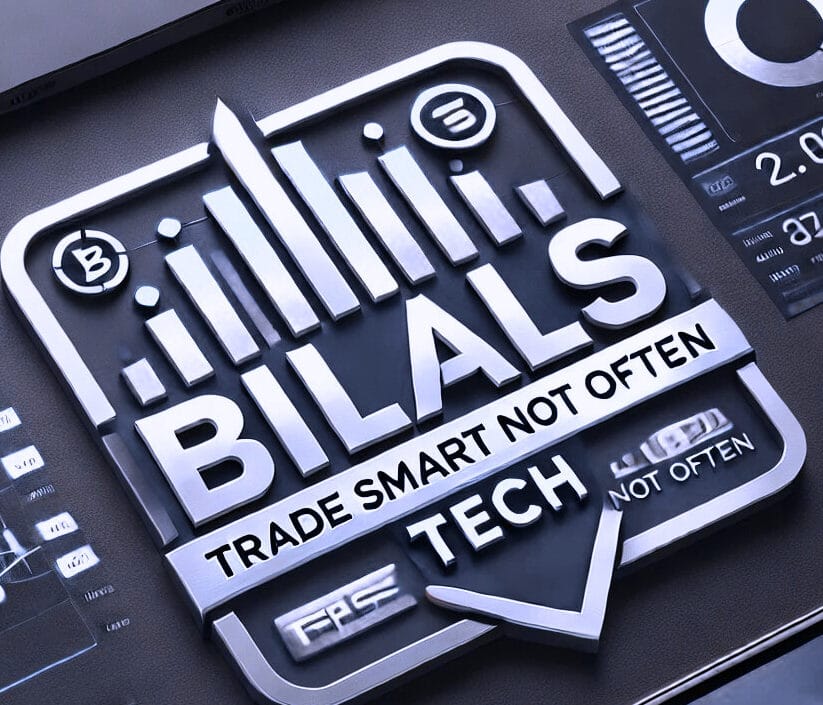North America News
U.S. Markets Shut Thursday for Juneteenth Holiday
U.S. financial markets—including the NYSE, Nasdaq, and bond markets—will be closed on Thursday in observance of Juneteenth. Trading volumes are expected to thin out, with many desk workers likely taking an extended weekend.
Expect subdued market activity through North American trading hours. Geopolitical watchers will keep an eye on developments in the Iran-Israel situation, which could reheat volatility heading into the weekend.
Trump Dismisses WSJ Iran Report: “They Don’t Know What I’m Thinking”
Former President Donald Trump pushed back against a Wall Street Journal report claiming he had approved strike plans on Iran. Writing on Truth Social, Trump denied any definitive action had been taken.
While media reports suggest internal debates are active, Trump’s own position appears uncertain. The MAGA movement remains divided—some push for action, others warn against another entanglement in the Middle East. The risk of escalation without a clear exit strategy remains a core concern.
Trump to Decide on Iran Strike Within Two Weeks, White House Says
President Trump is expected to make a final decision on whether to launch military action against Iran within the next two weeks, according to a White House statement on Thursday. Officials noted that diplomatic efforts remain active, with U.S. envoys in ongoing contact with Iranian counterparts.
The administration’s position is clear: preventing Iran from developing nuclear weapons is non-negotiable. Trump is reportedly still open to negotiations, but will act decisively if talks fail. No indication has been given that China will intervene in the situation militarily.

$1.6B EV Battery Plant Halted Over U.S. Policy Uncertainty
Automotive Energy Supply Corp. has paused construction on its $1.6 billion EV battery facility in South Carolina, citing policy instability in the U.S. The company, owned by a Chinese parent, blamed tariff uncertainty and a possible loss of clean energy subsidies.
The Wall Street Journal reported the delay reflects broader investor concern over unclear federal tax and trade policy. AESC says it plans to resume construction when the economic and regulatory environment stabilizes.
J.P. Morgan Maintains Investment Strategy, Sees Underlying U.S. Strength
J.P. Morgan Asset Management is staying the course with its asset strategy despite the Federal Reserve’s cautious stance. Chief market strategist Tai Hui says the firm remains focused on international diversification, income strategies, and alternatives like infrastructure and transport.
While the Fed recently downgraded its growth outlook and raised inflation expectations due to Trump-era tariffs, JPMAM continues to view the U.S. economy as fundamentally sound—though not immune to second-half volatility.
U.S. Mulls Iran Strike Within Days, Bloomberg Reports
Per Bloomberg, unnamed sources suggest the United States may be planning a military strike against Iran as soon as this weekend. The situation remains fluid, with targets such as Iran’s Fordow nuclear facility reportedly under consideration. U.S. military planners are said to be adjusting strategy as developments unfold.
Trump Greenlights Iran Strike Plans, Awaits Tehran’s Next Move
According to sources cited by the Wall Street Journal and corroborated by ABC News, former President Donald Trump has signed off on military strike options targeting Iran but is holding back on executing the plan. His decision hinges on whether Iran backs off its nuclear ambitions.
Trump has reportedly been presented with a range of military responses, including airstrikes on nuclear sites. When questioned on the matter, he told reporters, “I may do it. I may not do it. Nobody knows what I’m going to do.”
Canada to Enforce New Countermeasures Against Trump Tariffs
Prime Minister Mark Carney announced that Canada will roll out a package of trade countermeasures to address renewed U.S. tariffs on Canadian steel and aluminum. Starting July 21, Ottawa will revise its current retaliatory duties targeting American metal products.
The government also confirmed that only domestic suppliers and partners offering reciprocal tariff-free access will qualify for federal procurement contracts in steel and aluminum. Additional tariff actions are expected to follow, targeting unfair global trade practices and chronic oversupply in the sector. The severity of Canada’s response will depend on progress in upcoming negotiations with Washington.
Commodities News
Gold Tops $3,370 on Iran Tensions Despite Hawkish Fed Shift
Gold prices edged higher on Thursday, climbing 0.14% to $3,373, amid heightened geopolitical risks and a slight hawkish shift from the Federal Reserve. The yellow metal benefited from safe-haven flows as speculation builds over a potential U.S. strike on Iran.
At the same time, the Fed held interest rates steady and signaled just one rate cut in 2026, down from two previously projected. Despite the policy tightening tone, inflation concerns linked to tariffs supported gold’s appeal.
The U.S. Dollar Index also gained, up 0.19% to 99.03, while 10-year Treasury yields held at 4.391%. Fed Chair Powell warned that tariffs could push inflation higher, saying the Fed is ready to react as needed.
Meanwhile, market participants await Philly Fed data for additional cues. Money markets are pricing in around 46 basis points in cuts before year-end.

Silver Falls Despite Iran Tensions, Dollar Strength Weighs
Silver prices dropped nearly 1% to around $36.25 on Thursday, even as geopolitical tensions in the Middle East escalated. The decline came despite a typical expectation that conflict would boost demand for safe-haven assets like silver.
Analysts point to a strong U.S. dollar and steady Fed policy as key pressures. The Fed held interest rates at 4.25–4.50% this week and raised long-term rate projections, citing Trump-era tariffs as inflationary.
Chair Powell warned that rising goods prices could persist through summer. Meanwhile, silver technicals remain bullish, with the 20-day EMA near $35.40 acting as support. RSI near 60 suggests a pause in momentum but not a reversal.
Oil Climbs as Iran Fires Missiles Toward Israel
WTI crude rose to $75 per barrel Thursday after Iran launched a new barrage of missiles toward northern Israel. Reports suggest up to 15 missiles were fired, triggering air raid alerts and Israeli defensive responses.
The surge in oil prices was driven by both the fresh conflict and a surprisingly large 11.5 million barrel draw in U.S. crude stockpiles, as reported by the EIA. This marks the highest closing level for WTI since January.
Goldman: Brent Could Spike Above $90 on Geopolitical Tensions
Goldman Sachs has warned that Brent crude prices might briefly surpass $90 per barrel if Iran’s oil exports are significantly curtailed. In a Wednesday report, the bank noted that a geopolitical premium of around $10 per barrel has emerged, pushing Brent to $76–77.
Despite the tension, Goldman’s core projection still sees Brent easing to around $60/bbl in Q4—barring major supply disruptions. That said, in worst-case scenarios involving disrupted oil flows or shipping lanes, the price could escalate much further.
Europe News
Bank of England Holds Rates Steady at 4.25%, Vote Split 6–3
The Bank of England kept its benchmark interest rate unchanged at 4.25% in June, matching expectations. The policy vote split 6–3, with three members pushing for a 25 bps cut—slightly more dovish than previously forecast.
Officials acknowledged ongoing weakness in economic growth and signs of labor market loosening. The BOE warned inflation risks remain on both sides, reinforcing a cautious and flexible stance on future decisions. The central bank signaled that restrictive policy may be needed for longer.

Swiss National Bank Returns to Zero Rates, Signals FX Readiness
As expected, the Swiss National Bank lowered its key policy rate by 25 basis points to 0% in its June decision. The move reflects softer inflation pressures and a murky economic outlook.
The SNB noted growing global risks tied to trade tensions and a slower international recovery. It left GDP growth estimates for 2025 unchanged at 1.0%–1.5%, but slightly trimmed its forecasts for both GDP and inflation beyond that.
Inflation is now seen at just 0.2% in 2025 and 0.5% in 2026, raising the odds of a further cut. The SNB also reiterated its willingness to step into currency markets if needed.
Swiss Trade Surplus Shrinks Sharply in May as Exports Fall
Switzerland’s trade surplus narrowed significantly to CHF 3.83 billion in May, down from a revised CHF 6.33 billion in April, according to SECO’s latest data. The drop came as exports plunged 8.2% month-on-month, while imports climbed 2.1%.
Swiss watchmakers felt the pinch, with nominal exports dropping 9.5% compared to May last year. The steep decline in export performance highlights broader weakness in global demand, especially in luxury sectors.
BOE’s Lombardelli: Services inflation is proving quite sticky
- Comment from Lombardelli
- Weakening in UK labour market is in line with what we expected in May
SNB chairman Schlegel: We are now on the verge of negative interest rate territory
- Remarks by SNB policymakers after the rate decision earlier
- Will continue to monitor the situation and adjust policy if necessary
- Negative rates were an important instrument in the past
- We are aware of the undesirable effect of negative interest rates
- The rate cut today serves to counter lower inflationary pressures
- We can never exclude any measure on interest rates
- We have discussed many options
- Negative rates have side effects
- We set monetary policy, don’t have a goal for exchange rate
Tschudin:
- Global outlook subject to high uncertainty
- Expects Swiss economic growth to slow and be subdued for the rest of 2025
- Higher trade tensions has led to deterioration of global economic outlook
- Have not changed policy implementation with rates at 0%
ECB’s Villeroy: Return to normal monetary policy is a very positive step
- Remarks by ECB policymaker, Francois Villeroy de Galhau
- But in abnormal times, it does not necessarily mean an end to the journey
- Will monitor closely possible spillovers of energy prices
- Have to react to dynamics that risk pushing inflation off target
- Inflation expectations do not so far reflect a risk of lasting spillover
- 10% appreciation in the euro would compensate inflation impact of €10 increase in oil price
- We need to remain alert and agile in all our next meetings
- Barring any major exogenous shock, next monetary policy move leans in the direction of accommodation
- Tariffs to have limited effect on Euro Area inflation.
- The ECB doesn’t expect surprises on wage front.
ECB’s de Guindos: Price stability not enough to achieve growth
- Remarks from the ECB Vice-president on Econostream
- Price stability not enough to achieve growth.
- Improving productivity and competitiveness as well as having properly functioning labour market are also necessary.
- The ECB is not almighty.
- We can do what we can do.
- We can bring inflation down and now we think that we have achieved our target.
- We are confident that it will be stable around these levels.
ECB’s Nagel: We’re on the right track when it comes to monetary policy
- Comments from the ECB policymaker
- We’re on the right track when it comes to monetary policy.
- We’re now in the neutral territory of monetary policy.
- We’ll do what is necessary.
- You will find sentences in our last monetary policy statements about what we think about fragmentation.
- We have hope we can convince Washington of what is right or wrong when it comes to tariffs.
- In the absence of a good compromise with Washington over tariffs, US citizens would pay the higher price not Europeans.
- Bringing inflation to target is the best thing the ECB can do for growth.
- Our mission on inflation nearly accomplished but be sure we’ll do all we need to do.
EU Mulling UK-Like Trade Deal with U.S. to Avoid Tariff Clash
According to the Financial Times, EU officials are exploring a trade deal framework with the U.S. similar to what was agreed with the UK. Such a deal would accept a baseline tariff level—around 10%—while working to negotiate lower rates in specific sectors.
The EU has apparently backed away from threats of retaliation ahead of the July deadline, worried about deeper economic fallout. The shift suggests that many in Brussels are prepared to live with a 10% global tariff regime, treating it as the new normal.
EU Accepting 10% Tariffs as Floor in U.S. Trade Talks
EU trade negotiators are reportedly coming to terms with a 10% baseline tariff rate in any forthcoming deal with Washington, Reuters sources say. Despite efforts to negotiate softer terms, Brussels now sees the tariff level as difficult to shift.
“Ten percent has become sticky,” one source admitted. “They’re collecting revenues now.” With political leverage limited, the EU appears increasingly resigned to cementing a deal within those constraints.
ECB’s Rehn: Eurozone risks stagflation shock if Mideast crisis extends
- Comments from the ECB policymaker
- Eurozone risk stagflation shock if Mideast crisis extends.
Asia-Pacific & World News
China Approves Some Rare Earth Exports, Keeps Details Vague
China’s Ministry of Commerce confirmed it has granted a “limited number” of rare earth export licenses, but offered no clarity on which companies were approved or whether U.S. firms were included.
The statement emphasized that Beijing will continue to tighten its approval process and remains open to dialogue with other countries over export regulations. The opacity of the announcement leaves open questions about the impact on global supply chains.
Russia to Hold Joint Military Exercises With China in 2025
President Vladimir Putin announced that Russia will conduct joint military drills with China later this year. He also commented on European diplomacy, saying Russia does not see Germany or other EU states as neutral mediators due to their support for Ukraine.
Putin said he remains in contact with both Israel and Trump regarding the ongoing Iran conflict, but did not elaborate on any potential role for Russia in defusing tensions.
PBOC sets USD/ CNY reference rate for today at 7.1729 (vs. estimate at 7.1916)
- PBOC CNY reference rate setting for the trading session ahead.
PBOC injected 203.5bn yuan via 7-day reverse repos at 1.40%
- 119.3bn yuan mature today
- net injection is 84.2bn yuan

Australia Jobless Rate Steady, But Employment Falls in May
Australia’s labor data for May 2025 came in weaker than expected, with total employment falling by 2,500 versus a forecasted 25,000 gain. Despite the dip, the unemployment rate held steady at 4.1%, in line with expectations.
Full-time employment grew by 38,700, offsetting a drop of 41,100 part-time positions. Participation slipped slightly to 67.0%. While the shift toward full-time jobs offers some cushion, the headline job loss supports market bets on an RBA rate cut, currently priced in at just under 80%.
New Zealand GDP Beats Forecasts in Q1, Still Negative Year-on-Year
New Zealand’s economy expanded by 0.8% in Q1 2025, beating expectations of 0.7% growth. However, year-on-year GDP remained in negative territory at -0.7%, although that too was slightly better than the expected -0.8%.
While the quarter-on-quarter performance suggests some momentum, the annual contraction highlights ongoing recovery challenges. Previous Q4 GDP was revised downward from -1.1% to -1.3%.
Most Japanese Firms Shrug Off U.S. Tariffs, Back Tax Relief
A new Reuters survey finds 71% of Japanese firms say the impact of U.S. tariffs has been manageable, and 84% are sticking with their investment plans despite looming tariff hikes. Many view the current trade climate as temporary, given Trump’s time-limited presidency.
Domestically, 60% of respondents support a sales tax cut to counter inflation, although 64% oppose using debt to fund it. Japan’s current sales tax stands at 10%, with a reduced rate of 8% for essentials like food and newspapers.
Japan to Boost Retail Bond Sales, Cut Long-Term Debt Offerings
Japan plans to sell 500 billion yen more in government bonds to individual investors, bringing total household sales to 5.1 trillion yen. Meanwhile, the government will trim planned long-term bond sales, including a 900 billion yen cut each to its 20- and 30-year issues.
This shift comes after a surge in long-bond yields and lackluster auction demand. Officials aim to rebalance supply and restore confidence, especially as the Bank of Japan slows its pace of bond-buying reductions. The updated bond strategy will be discussed with primary dealers on Friday.
BoJ May Hold Rates Until 2026 Amid Tariff and Growth Concerns
Former Bank of Japan chief economist Seisaku Kameda told Reuters the central bank may not hike rates again until early 2026. The BoJ’s May report took a pessimistic turn, cutting growth and inflation forecasts due to weak global demand and trade headwinds from the U.S.
Kameda suggested a shift in U.S. tariff policy would be necessary to justify any rate hike before 2026. With inflation expected to peak at 2.2% in FY2025 and then fall below target, the BoJ appears unlikely to tighten again until early 2026—possibly January or March.
Crypto Market Pulse
Bitcoin, Ethereum Hold Key Support as XRP Lags Despite Canadian ETF Buzz
Crypto markets stayed cautious Thursday following the Fed’s rate decision, with Bitcoin trading just under $105,000 and Ethereum near $2,536. Despite a lack of major upside, both assets continue to hold above their major support levels.
Bitcoin open interest remains in decline, falling to $69 billion from its May peak of $80 billion, reflecting reduced trader conviction. The new CoinGlass Derivatives Risk Index suggests heightened instability in futures markets, with both long and short positions facing elevated risk.
Ethereum spot ETFs recorded $19 million in inflows Wednesday—marking a third straight day of interest. Bitcoin ETFs saw $390 million in net inflows, led by BlackRock’s IBIT with $279 million.
Meanwhile, XRP is struggling. Despite Canada approving XRP ETFs from Purpose, Evolve, and 3iQ, the token remains pinned under resistance at $2.24, with traders showing little interest in the rally. RSI and MACD indicators point to continued weakness unless bulls reclaim higher levels.
HYPE Drops 7% Despite Lion Group’s $600M Treasury Launch
HYPE token fell 7% Thursday even after Lion Group announced a major $600 million investment into a Hyperliquid (HYPE) treasury reserve. The capital, secured through ATW Partners, is part of the firm’s relaunch of its crypto strategy.
Lion Group, listed on the Nasdaq, plans to make HYPE its core reserve asset, while also investing in Solana and Sui-based protocols. CEO Wilson Wang emphasized HYPE’s potential in decentralized finance infrastructure.
Despite the bullish announcement, HYPE extended its weekly losses to 14%. Technical analysis points to further downside, with a possible test of the $30 support level if bearish momentum continues.

XRP Drifts Toward $1.80 Amid Weak Momentum, UK Policy Push
XRP continues to drift lower, trading near $2.15, as weak market sentiment and reduced liquidity weigh on price action. Despite spot ETF launches in Canada and Ripple’s advocacy for crypto-friendly regulation in the UK, traders remain hesitant.
Ripple is calling on the UK to speed up regulatory reforms around stablecoins and tokenization, urging the government to capitalize on its opportunity to lead in digital asset innovation.
Technically, XRP is stuck between support at the 200-day EMA ($2.09) and resistance at $2.24, where the 50-day and 100-day EMAs converge. A breakdown below support could send XRP sliding toward $1.80—its April low.
Solana Faces Pressure Despite Sol Strategies’ NASDAQ Ambitions
Solana (SOL) dropped to $145 on Thursday as downside risks remained in play, even as Canadian firm Sol Strategies filed for a Nasdaq listing. The company, which holds over 420,000 SOL in treasury and validator stakes, seeks U.S. investor exposure through a Form 40-F registration with the SEC.
Despite the headline, Solana is vulnerable to further losses. The MACD continues to flash a sell signal, and RSI remains below the neutral zone. Support at $145 is key, but breakdowns to $135 or even $125 remain possible if sentiment doesn’t improve.

The Day’s Takeaway
United States
- Trump’s Decision on Iran Imminent: The White House says President Trump will decide within two weeks on whether to launch strikes on Iran. Officials maintain diplomacy remains a live option, and envoys are in contact with Tehran. The focus remains on preventing nuclear enrichment, with no indication of Chinese military involvement.
- Markets Thin on Juneteenth Holiday: U.S. equity and bond markets were closed for Juneteenth, contributing to muted trading volumes and subdued risk appetite. Futures softened amid geopolitical uncertainty.
Canada
- Canada Retaliates Against U.S. Tariffs: Prime Minister Carney announced a new round of countermeasures to address Trump-era tariffs. Starting July 21, Canada will adjust duties on U.S. steel and aluminum. Government procurement will be limited to domestic and reciprocal trade partners only. Further steps to curb global overcapacity and unfair trade are planned.
Commodities
- Gold Tops $3,370: Gold rose 0.14% to $3,373, driven by mounting geopolitical risk linked to potential U.S.-Iran conflict. The Fed’s hawkish tone capped further gains. Dollar strength added additional resistance.
- Oil Climbs on Iran Conflict: WTI crude hit $75 per barrel as Iran launched missiles toward Israel. The move, combined with an 11.5M barrel inventory draw in the U.S., pushed oil to its highest close since January.
- Silver Slips Despite Tensions: Silver dipped nearly 1% to $36.25, pressured by a stronger dollar and hawkish Fed outlook, despite escalating Middle East risks. Technicals remain bullish, but short-term momentum has stalled.
Europe
- BOE Holds at 4.25%: The Bank of England left rates unchanged, with a 6–3 vote split. Three policymakers called for cuts amid slowing growth and softening labor data. Inflation risks remain balanced, and the bank stressed flexibility going forward.
- EU Reluctantly Accepts 10% Tariffs: EU officials appear increasingly resigned to a 10% baseline tariff level in any future trade pact with the U.S. Internal efforts to lower the rate have stalled. Brussels has backed off retaliation plans over fears of economic fallout.
- UK-Style Trade Deal in Focus: The EU is exploring a model similar to its UK agreement with the U.S.—fixed tariffs with scope for sectoral negotiations. The approach reflects a broader shift toward normalization of tariffs as a global fixture.
- Switzerland Cuts Rates to 0%: The Swiss National Bank lowered its key policy rate by 25 bps, citing soft inflation and rising external risks. GDP growth forecasts for 2025–2026 were held steady, while CPI projections were cut. The SNB reaffirmed its readiness to intervene in currency markets if needed.
- Swiss Trade Surplus Narrows Sharply: May’s trade surplus fell to CHF 3.83 billion, down from CHF 6.33 billion in April. Exports plunged 8.2% month-on-month, while imports rose. Watch exports dropped 9.5% year-on-year in nominal terms.
Asia
- China Issues Rare Earth Licenses: China approved a batch of rare earth export applications but offered few details. No information was given on whether U.S. firms were included. Officials said the approval process will remain tightly managed.
Crypto
- Bitcoin & Ethereum Hold Ground Amid Market Fragility: Bitcoin remains above key support near $105,000 while Ethereum steadies around $2,536. Despite ETF inflows, broader crypto sentiment remains fragile due to unstable derivatives markets and declining open interest.
- XRP Falters Despite Canadian ETF Approvals: XRP trades around $2.15 with little reaction to Canadian regulator approval of ETFs from 3iQ, Purpose, and Evolve. Technicals point to downside risks toward $1.80, with momentum indicators weakening.
- HYPE Drops 7% After $600M Treasury Launch: Despite Lion Group’s $600 million reserve investment into Hyperliquid (HYPE), the token tumbled 7% Thursday. Bearish technicals point to a potential drop to the $30 level.
- Solana Weakens Despite NASDAQ Ambitions: Solana fell to $145 as investor appetite waned. Canadian firm Sol Strategies filed to list on the NASDAQ, but the move failed to lift price sentiment. MACD and RSI indicators signal further downside risk.

















